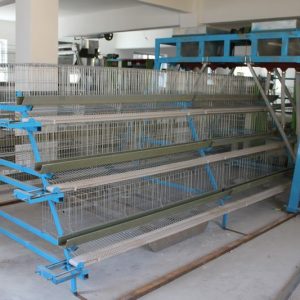Look: The color and body shape of the chicks are in accordance with the characteristics of this breed. The fluff is clean, dry, lively and responsive. The body weight meets the standard of the breed. The chicks are heavy in shell, neat and clean, and shiny; the abdomen is flat and soft; there is no bleeding mark in the navel , Healed well, covered with fluff on tight and dry; chicks are lively and active, eyes are big, feet are strong; organs are not defective, without big belly, black navel, paste anus. The temperature and humidity in the hen house are more suitable. The chicks will pour into the chick cages and will naturally spread out. When people enter, they will follow and run. This kind of chicken is healthier. Weak chicks: showing lack of energy, burying their heads, closing their eyes, unstable standing, thin feet, fear of cold, shrinking into a ball, and unresponsiveness; fluffy, dull, and some lacking fluff; enlarged abdomen, blood stains, poor healing, surrounding There is mucus, no fluff, and exposed; listening: the sound is loud and crisp; the cry is crisp, people do not need to enter the chicken coop, the crisp cries in the chicken coop can be heard very far outside the brooding room. The sound is louder, so the chicks are generally healthier. Weak chicks faintly sullen or scream, and their wings are drooping. The chicks are generally weaker.
Touch: The chicks have a strong ability to break free, and their legs are struggling, with a clear cry. There is meat on the hand. This chick is generally healthier and stronger. Farmers in some areas say that the chicks are very hard to know that this is how they are obtained. Some chicks feel fur and bones, thin shells, and feel light in the hands. They are soft and weak. This kind of chicks are generally not very good. .
Malformation: small head, protruding eyes, one or no eye, twisted neck, thick swollen tarsal joints, multiple feet, multiple toes, no wings, incomplete absorption of yolk, too short villous knots, eight-legged legs, etc. Malformed infants have no rehabilitation value and should be eliminated in time. This kind of chicks generally have a small proportion and are easy to find, and found to be eliminated in time.
Weight: Due to the different chick strains, the chick’s initial weight (weighed within 2 to 3 hours after the chick is detected) will have different requirements. Generally, the weight of the chicks is about 65% of the weight of the eggs. The weight of the eggs is different at each stage, and the weight of the chicks will be slightly different. During the road transportation, water loss and chicken excrement will affect the weight of one-day-old chicks in the farm. Farm weighing is only a reference. If the breeding farm is better, all stages are good. If you can’t judge Or uncertainly, the data from the terminal chicken farm shows that the chicks hatched from the peak eggs are relatively stable, but this is only a reference, not an absolute.
Evenness: better chicks, generally better uniformity, everyone looks neat, uniform, and slightly uneven in size, before each vaccine or feeding, pay attention to group feeding, separate size, strong and weak.
Maternal antibody: uniform and reach a certain level of maternal antibody. Newcastle disease: 8~10; H9: 8~10; H5: 7~11, depending on the level of breeder antibody and other comprehensive factors, can affect the maternal antibody of early chicks, early maternal antibody may be up and down If there is a slight deviation, the vaccine immunization time needs to be arranged reasonably. Mortality: When the chicks arrive at the farmer, excluding the reasons for transportation and improper feeding management, poisoning, epidemic disease, feed and other factors, the mortality rate is controlled below 1% within 1 week. Depending on the conditions and techniques of different brooding farms, the rate of dead panning will vary slightly.
Chicks have a high rate of dead panning, and feeding management generally has omissions. The drinking water of the 1-day-old chicks is very critical. The early humidity is low, the temperature is high, the heat is dry, the water is not enough or the water is not enough. In the next 3-5 days of age, the death rate will be high, generally after 6-7 days of age. Turned normal.
Observing the rate of dead panning and careful analysis, we can see some problems: thin chicks’ first hair, imperfect development of body temperature regulation function, coupled with unreasonable feeding and management, often cause mass death of chicks.

